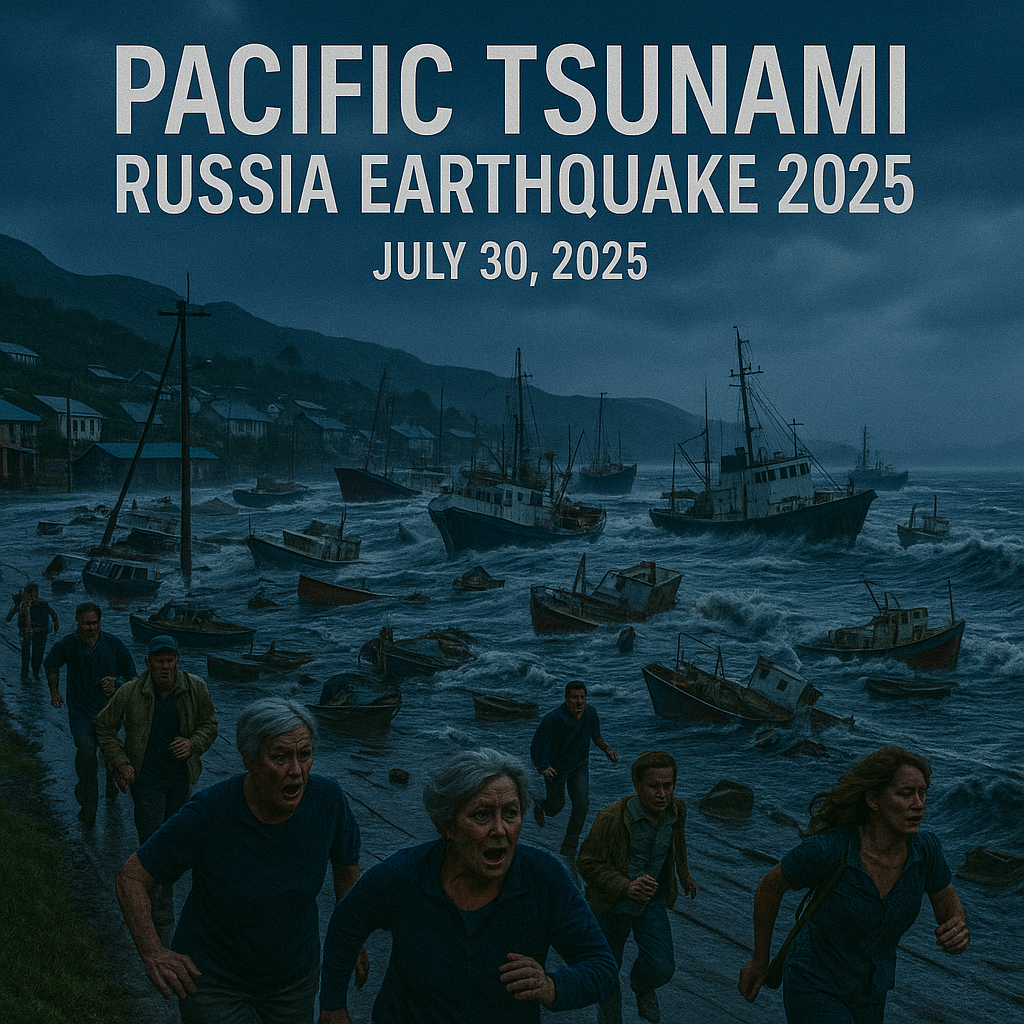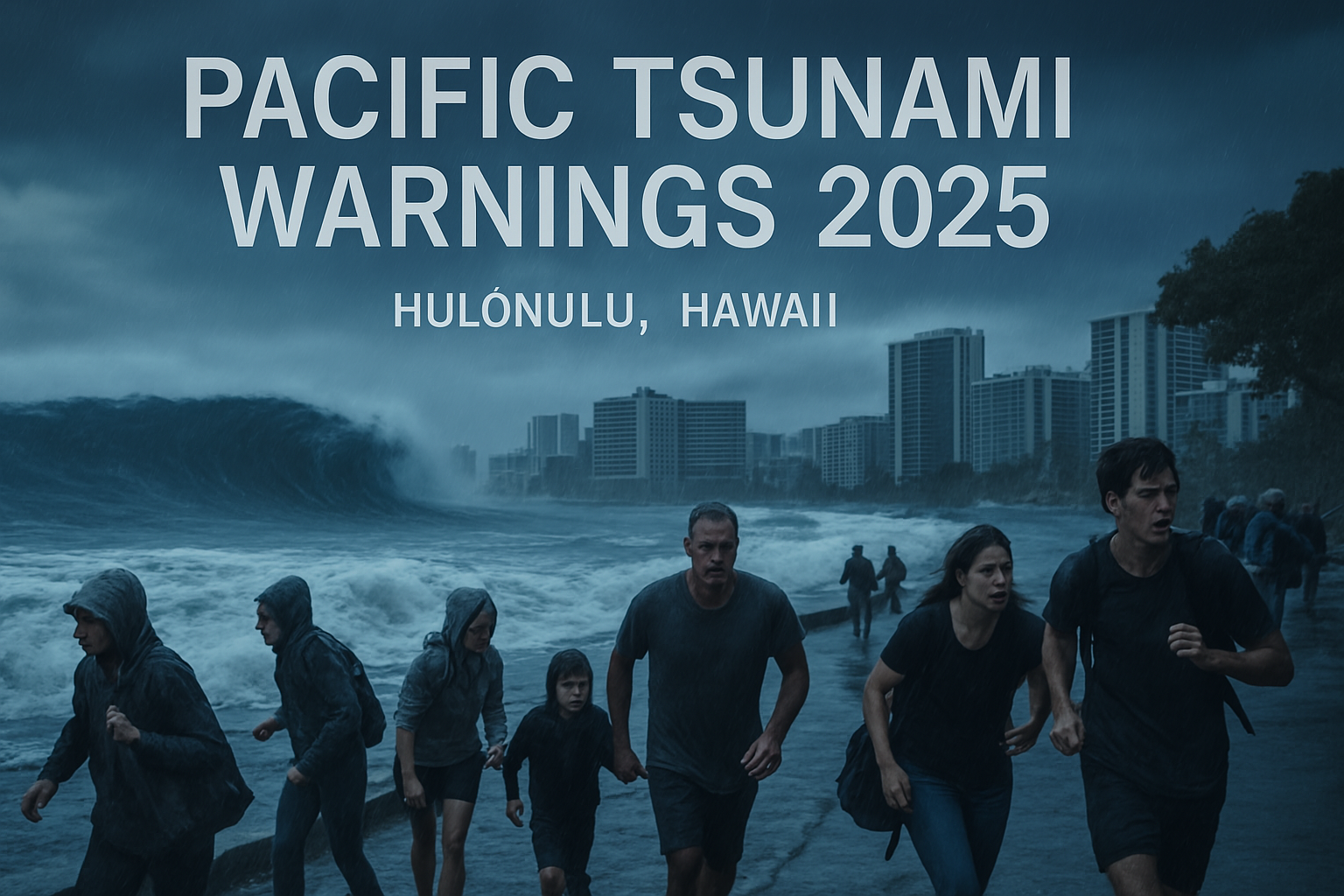Pacific Tsunami Russia Earthquake 2025: Waves Hit California, Hawaii, Japan

A massive 8.8-magnitude earthquake off Russia’s Kamchatka Peninsula unleashed a Pacific-wide tsunami, sending waves crashing into California, Hawaii, Japan, and beyond, sparking evacuations and emergency declarations. Described as one of the most powerful quakes in over a decade, the Pacific tsunami Russia earthquake 2025, reported by Newsweek, flooded Russian ports, gridlocked Hawaiian highways, and put West Coast communities on high alert. With waves reaching up to 13 feet in some areas and aftershocks keeping the region on edge, this article provides live updates, regional impacts, and essential safety guidance for those in affected areas.
Earthquake and Tsunami Overview
The earthquake struck at approximately 8:25 a.m. local time (4:25 p.m. PDT, July 29, 2025) near Petropavlovsk-Kamchatsky, Russia, at a shallow depth of 12.8 miles, per the U.S. Geological Survey (USGS). Initially measured at 8.0, it was upgraded to 8.8, tying for the sixth-strongest quake ever recorded, per Newsweek. Occurring in the Kuril-Kamchatka subduction zone, the quake’s shallow depth triggered a tsunami that spread across the Pacific, with recorded wave heights including:
- Russia: Up to 13 feet (4 meters) in Severo-Kurilsk, flooding ports, per Reuters.
- Hawaii: Up to 5.7 feet above normal in Kahului, Maui, and 11 feet crest-to-trough, per Newsweek.
- California: Up to 3.6 feet in Crescent City, with 1.99 feet in Point Reyes, per Newsweek.
- Japan: Up to 4.3 feet in Iwate Prefecture, with warnings for 10-foot waves, per The Washington Post.
- French Polynesia: Warnings for up to 13 feet in the Marquesas Islands, per Newsweek.
The Pacific Tsunami Warning Center (PTWC) issued warnings and advisories for Hawaii, California, Alaska, Japan, and multiple Pacific nations, per CNN.
Regional Impacts and Responses
United States: West Coast and Hawaii
- California: Waves up to 3.6 feet hit Crescent City, with minor flooding in Arena Cove and Humboldt Bay, per Newsweek. The National Weather Service (NWS) issued a tsunami warning for Northern California (Cape Mendocino to Oregon border) and an advisory for the Bay Area, Central Coast, and Southern California, per Los Angeles Times. Dr. Ariel Cohen of NWS Los Angeles noted “powerful rip currents” in Port San Luis and Santa Monica, urging residents to avoid beaches for 24 hours, per Newsweek. Crescent City’s tsunami sirens, a grim reminder of the 1964 disaster that killed 11, sounded late Tuesday, per Newsweek.
- Hawaii: Waves caused minor flooding in Hilo and Kahului, with water receding 20–30 feet at Haleiwa Harbor, per Newsweek. Evacuations gridlocked Honolulu and Maui, with Hilo International Airport closed to aid Keaukaha’s evacuation, per Hawaii News Now. Governor Josh Green deployed Black Hawk helicopters and high-water vehicles, noting, “We’re hoping we’re soon out of harm’s way,” per Newsweek. The tsunami warning was downgraded to an advisory by Wednesday morning, per The Washington Post.
- Oregon and Washington: Waves up to 2.5 feet hit coastal areas, with advisories warning of dangerous currents, per Newsweek. No evacuations were ordered, but beaches were cleared, per KSBY.
- Alaska: Waves nearing 3 feet struck Adak, with advisories for the Aleutian Islands and Panhandle, per Newsweek. No significant damage was reported, per ABC News.
Russia: Flooding and Emergency Declaration
Severo-Kurilsk, a Kuril Islands town, saw waves up to 13 feet flood fishing ports, damaging infrastructure but causing no deaths, per Reuters. Petropavlovsk-Kamchatsky reported structural damage, including a collapsed kindergarten facade, and power outages, per Newsweek. A state of emergency was declared in the Kuril Islands, with 2,700 residents evacuated, per Newsweek. Tsunami warnings were lifted by Wednesday, per The Guardian.
Japan: Mass Evacuations
Nearly 2 million residents across 220 municipalities, from Hokkaido to Tokyo Bay, were urged to evacuate, with waves up to 4.3 feet recorded, per Newsweek. Fukushima’s nuclear plant evacuated 4,000 workers, halting treated water discharge, with no abnormalities reported, per Newsweek. Warnings were downgraded south of Fukushima by Wednesday, but northern alerts persisted, per The Washington Post.
Other Pacific Regions
- French Polynesia: Warnings for 13-foot waves in the Marquesas Islands prompted evacuations, per Newsweek.
- Chile: A Red Alert covered coastal areas, with schools closed and evacuations underway, per Newsweek.
- Colombia, Philippines, New Zealand, and Others: Alerts warned of strong currents and surges, with no major damage reported, per Al Jazeera.
Broader Implications
The quake, the strongest since Japan’s 2011 9.0-magnitude disaster, highlights the Pacific Ring of Fire’s volatility, per TIME. Key implications include:
- Economic Impact: Flooded ports in Russia and disrupted tourism in Hawaii could cost billions, with the USGS issuing a red alert for damage potential, per Newsweek. California’s coastal businesses faced temporary closures, per KSBY.
- Geopolitical Context: The Kuril Islands’ flooding occurs amid Russia-Japan territorial disputes, complicating recovery efforts, per Newsweek.
- Preparedness Gaps: Effective warning systems saved lives, but traffic gridlock in Hawaii and limited infrastructure in remote areas like Severo-Kurilsk highlight vulnerabilities, per CNN. The establishment’s “no significant damage” narrative may underplay long-term economic and ecological impacts, such as beached whales in Japan, per Newsweek.
Safety Measures for Residents
- Stay Informed: Monitor tsunami.gov or local agencies like NWS (weather.gov) for updates.
- Avoid Coastal Areas: Stay away from beaches, harbors, and marinas until advisories are lifted, per Newsweek.
- Evacuate Safely: Move to higher ground or the fourth floor of a sturdy building if in a tsunami zone, per Hawaii News Now.
- Boater Precautions: Navigate to deep water (180+ feet) to avoid currents, per KSBY.
- Prepare for Aftershocks: Expect ongoing tremors, which may trigger additional waves, per The Guardian.
Conclusion
The Pacific tsunami Russia earthquake 2025 tested the resilience of communities from California to Japan, with an 8.8-magnitude quake triggering waves that disrupted lives across the Pacific. While warnings have been downgraded in many areas, the event underscores the need for robust infrastructure, public awareness, and global coordination in seismic zones. As recovery begins, the focus shifts to addressing economic and ecological fallout. Share your experiences below and stay updated on this unfolding crisis.









